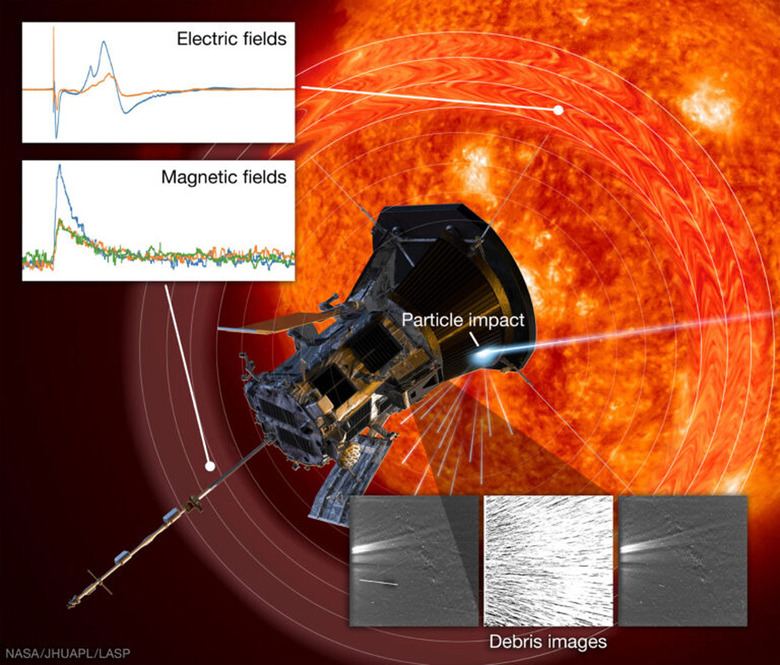Parker Solar Probe Data Shows How Hypervelocity Dust Impacts Can Cause Damage
NASA's Parker Solar Probe has been exploring space near the Sun and observing Venus for several years. The probe launched on August 12, 2018, and has so far set numerous records for spacecraft. Recently, the probe was used by scientists at the Laboratory for Atmospheric and Space Physics at the University of Colorado Boulder and the Johns Hopkins University Applied Physics Laboratory to investigate collisions between the spacecraft and hypervelocity dust grains. It's hard to imagine a grain of dust being able to cause damage to anything, but when traveling at incredible velocities, something tiny can cause devastating damage.Researchers utilized electromagnetic and optical observation data from the Parker Solar Probe to provide the best data yet on how hypervelocity dust impacts can lead to spacecraft damage and interrupt its operations. Currently, Parker is operating near the sun at speeds of around 400,000 miles per hour. It's currently traveling through an area known as the zodiacal cloud, which is a thick cloud of dust shaped like a pancake extending throughout the solar system. The cloud is made up of tiny dust grains shed by asteroids and comets as they transverse the solar system.
The spacecraft encounters thousands of tiny dust grains ranging from about two microns to 20 microns in diameter, which is less than a quarter of the width of a human hair while moving through this region. The grains of dust travel at over 6700 miles per hour, and impacts can cause serious damage. When the dust grains impact the spacecraft, it heats the dust and the spacecraft surface enough to vaporize material, which then ionizes. When material ionizes, it's separated into its ion and electron components producing plasma.
Rapid vaporization and ionization create a plasma explosion lasting one-thousandth of a second. In an impact with a larger dust grain, the impact generates a cloud of debris that expands slowly away from the spacecraft. Researchers were able to utilize antennas and magnetic field sensors aboard the spacecraft to measure these disturbances in the spacecraft's electromagnetic environment. Researchers believe the findings could lead to insights about space weather around the sun.

The data allowed the team to study the plasma explosions and how they interact with the solar wind. Researchers believe that by studying how the process works on a small scale, they might better understand how larger plasma regions surrounding planets like Venus and Mars are swept away by the solar wind. Data gathered by the team also has implications for the safety of the Parker Solar Probe and future spacecraft that may operate in the same area.
As far as implications for Parker itself, the team found that many image streaks appear radial and originate near the critically important heatshield. Data also showed that some debris could scatter sunlight into the navigation cameras resulting in the spacecraft temporarily being unable to determine how it was oriented in space. That is a particularly hazardous problem for the solar probe because it has to have its heatshield oriented precisely to survive in the incredibly hostile environment where it operates.
The Parker Solar Probe will be conducting its primary science mission until 2025 and will make 15 more orbits around the sun during that time. In October 2018, the probe set a record by making the closest approach to the sun in history. By December 2018, the probe had returned data from that approach. By August 2019, Parker had returned 22 GB of data on its approach to the sun and more.
